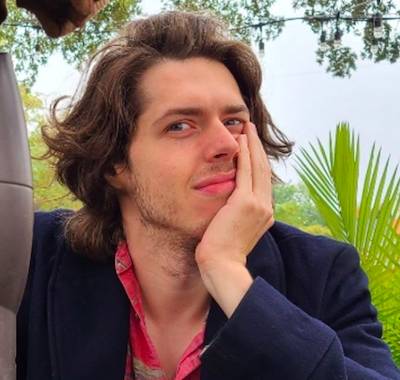Inside the Heist: Editor Jay Prychidny on Cutting the Monster Mayhem in “Wednesday”
“If These Woes Could Talk,” the fourth episode of Wednesday season two, is an hour of monster playtime from Tim Burton. The fourth episode wrapped up part one of the season and is built as a heist story with Wednesday Addams (Jenna Ortega) seeking family secrets while Uncle Fester (Fred Armisen), a zombie, and a Hyde (aka a mutant) run amok in an institution. It’s exuberant chaos in the hands of Burton’s frequent editor, Jay Prychidny (Beetlejuice Beetlejuice).
On top of all the zombie action, Prychidny must unveil the hooded killer in a monologue. “The biggest challenge was laying out all the pieces,” Prychidny told The Credits. “How does Wednesday know Fester gets imprisoned in the institution? How does Wednesday get that information? What is her plan that comes out of this? What in the plan goes wrong?”
The editor discussed with The Credits refining and sharpening the episode, including Wednesday’s uncharacteristically cheerful reunion with her grandmother and pivotal death scenes.
Episode four is comfortably packed. What were your first impressions and instincts when you saw Tim Burton’s footage?
That episode – well, a lot of episodes – went through a lot of changes. It’s a heist story, so there’s a lot to set up. There were several additional scenes that we shot to pull it all together, and certain scenes we dropped. It was a journey. But even from the first cut, I loved it. The episode had so many great musical moments. You have Billie Piper playing [“Zombie”] on the piano and Wednesday breaking into Fester’s cell, which was very similar to my first cut. I added the song “Dreamweaver.” As an editor, the musical moments are just the most fun and creative thing to do.
What was re-shot in the episode?
In the original version, Wednesday freed [the zombie] Slurp from the cell, causing chaos throughout the institution. It was decided that maybe we didn’t want Wednesday responsible for all those deaths, so we did a little reshoot with a body double. Now, Wednesday leaves the cell, and Slurp escapes on his own.
Is that question often asked in the editing room — how sadistic can we have Wednesday act?
It’s tricky. Some people felt strongly that she shouldn’t free the zombie. So, her intention was to create chaos and escape from the institution, but some people thought, we don’t really want Wednesday murdering or being indirectly responsible for manslaughter. And for some people — for me — I didn’t even think about it until people pointed it out. I didn’t even consider that, but I totally understand that argument.
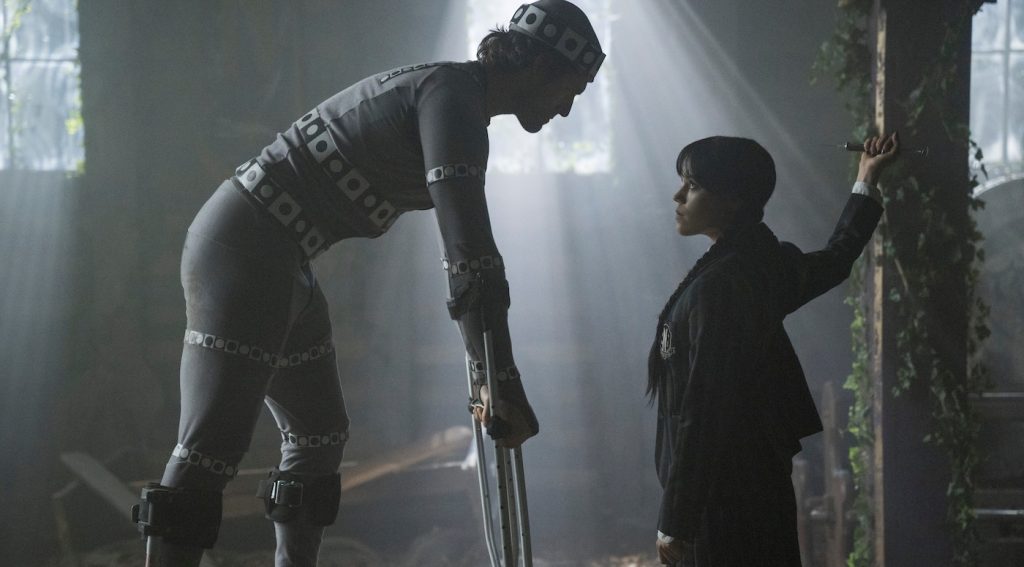
For Dr. Fairburn’s (Thandiwe Newton) death, how gory could you go?
There wasn’t anything more that was shot. I wanted more violence, more gore, but again, what is the level of the show? I was doing this after Scream VI, so I had those horror vibes in me. I asked the showrunner while I was cutting about how dark we can go. I said, “I’m just going to cut this as scary as I can.” He said, “Go for it.” Even though the footage itself wasn’t really graphic, I tried as much as I could to make it feel horrific and make the zombie as scary as I could. For adults, it’s probably not scary, but for younger viewers, it’s strong material.
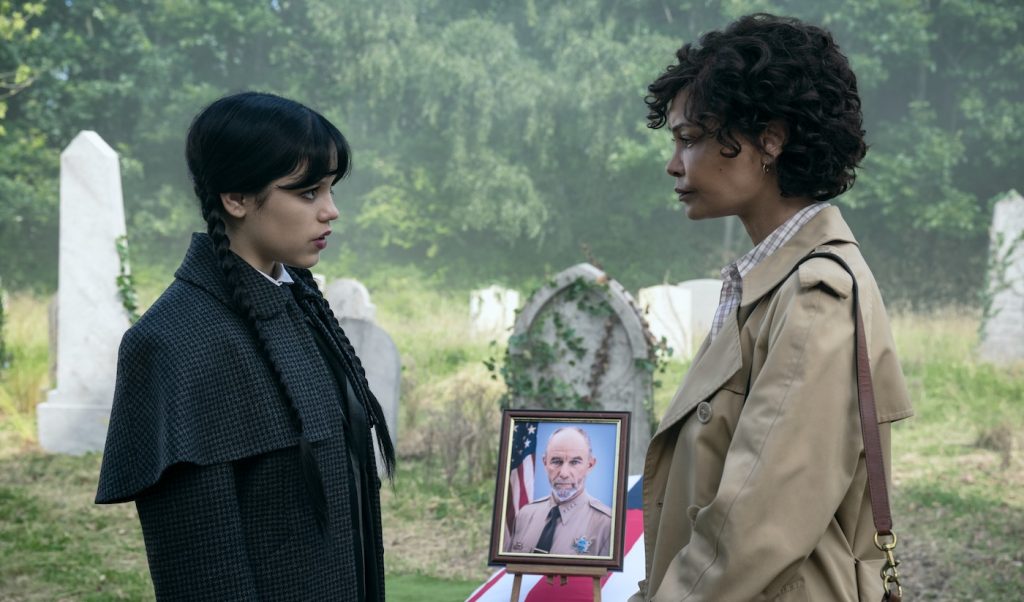
Before Marilyn Thornhill (Christina Ricci) dies, how’d you want to continue to define her and Tyler’s perverse relationship?
There’s an almost sexual tension in these scenes, just blurring the lines about their relationship. Seeing it go in this direction, I thought, this is just such an intriguing, unique take on what these scenes are that I kind of leaned into that. That was the most interesting thing that happened on a character or emotional level.
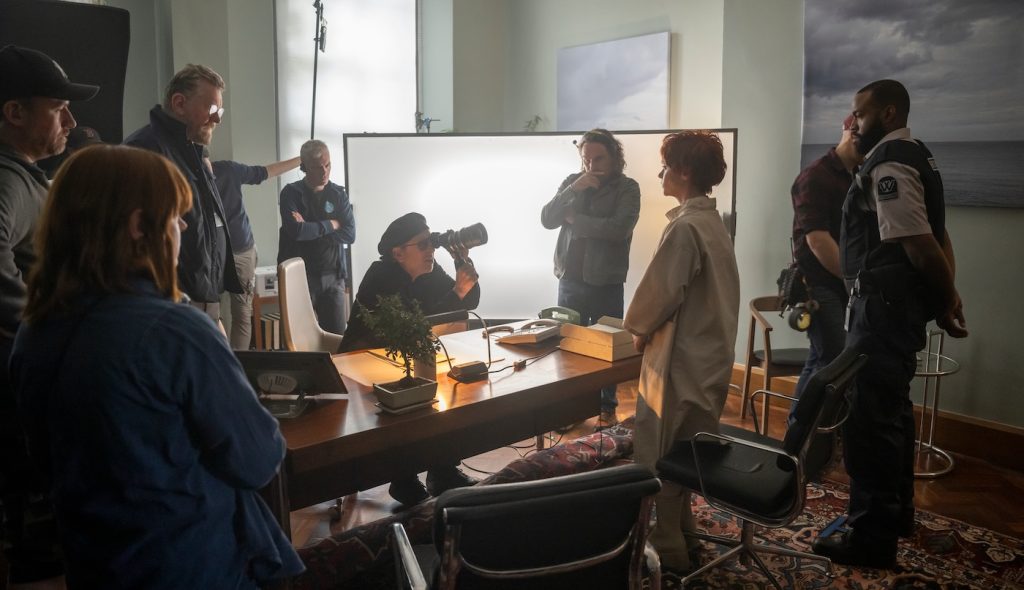
The episode is, first and foremost, a heist story. At any point, did Tim say, “Hey, how can we make this more like The Hot Rock or The Italian Job?”
I don’t think specifically, but what was a common note from him: “This should feel more heisty.” I think for him, what that meant was just the music, the fast-paced editing. Even until probably a month ago, we were still making changes to the episodes. The sequence when Agnes (Evie Templeton) is in the toilet putting the dynamite in and Wednesday is in the trunk of the car – that was his last note on the episode. Only a month or so ago, we made those changes to make it faster-paced, more cross-cutting, and more rapid.
A scene that breathes nicely is Wednesday reunited with her grandmother, Hester Frump (Joanna Lumley). It’s by far the most smiley we’ve seen Wednesday. Was there a debate about her beaming like that?
It’s definitely a question some people have. It’s like, “Why is Wednesday smiling?” I don’t know if it was discussed by Jenna or Tim, how much of it was conscious. I don’t know any of the backstory. The only other time I think we’ve seen Wednesday be that happy is in episode seven from season one, when Fester shows up. Jenna breaks into this huge smile. I think that’s an interesting choice, that she’s having that reaction to the extended members of her family, but not her immediate family.

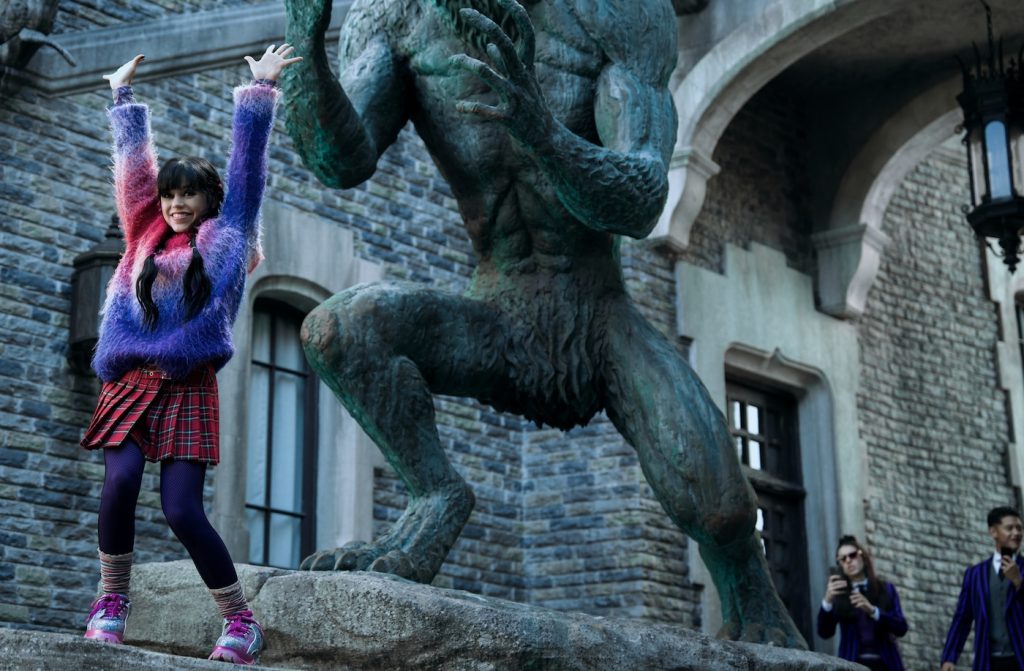
When Morticia (Catherine Zeta-Jones) reunites with her mother, what about Tim’s blocking and those performances did you want to preserve?
That scene between Wednesday and Catherine, when she throws the book in the fire, was a fabulously performed, wonderfully covered scene. That was one scene in particular where there was a lot of footage, because the room was shot from so many different angles. We had multiple levels of extreme close-ups for that scene. I used them only for very key moments: when Wednesday found out that her aunt Ophelia was in an institution and she had the black tears, I used a close-up for that. When Hester tells Morticia she’ll donate to the Nevermore Gala, there’s a close-up there, too.
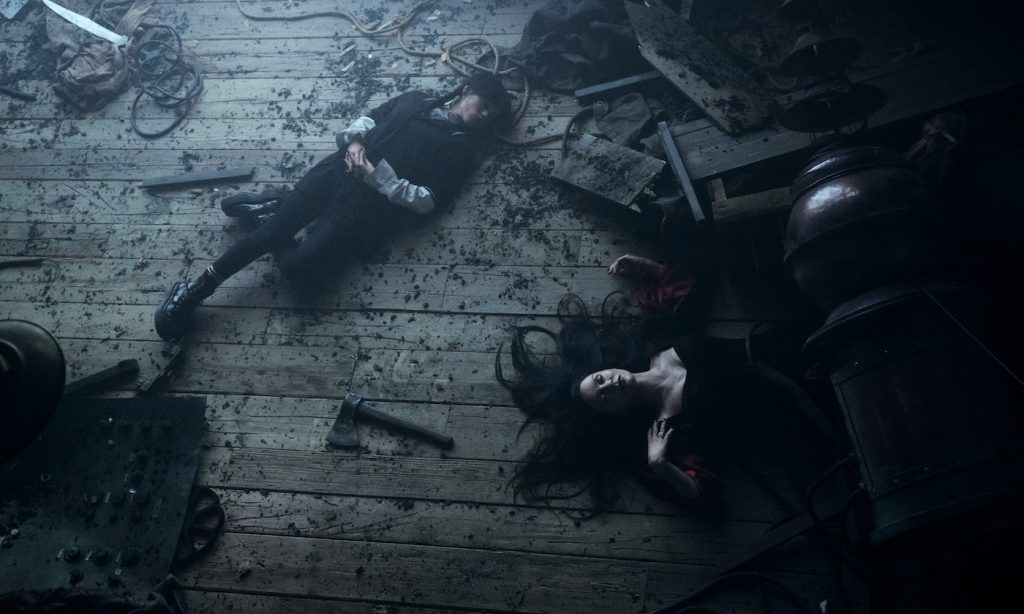
What’s unique about cutting Fester’s comedic timing?
Tim had a particular way of shooting Fester. You don’t see him enter rooms or exit rooms. He’s always revealed either in a camera move or people step out of the way and he’s there.
Tim Burton is allergic to exposition. The more explanations, the more questions in his view. How much do you two tend to cut in more dialogue-driven scenes?
That was another big question we dealt with in the first scene of the first episode. It always gets discussed a lot – taking out as much as possible. Tim wants his characters and scenes to be in the moment. He doesn’t want characters standing around and talking, remembering what happened last season. Sometimes that exposition doesn’t get shot. Sometimes they’ll change the script on the day, or sometimes they’ll shoot it, and then in post, it’s a journey to take a lot of that stuff out so the audience can stay in the present.
Was that originally a lot of “previously on” in the season two premiere?
It had all this dialogue and voiceover about what Wednesday had been doing. You have to do some of that, but we want her in the moment – investigating the serial killer. There was more story detail there, but it didn’t matter. You need to launch into the present-day stories as efficiently as possible.
Wednesday season 2 is now streaming on Netflix.
Featured image: Wednesday. Jenna Ortega as Wednesday Addams in episode 206 of Wednesday. Cr. Helen Sloan/Netflix © 2025


